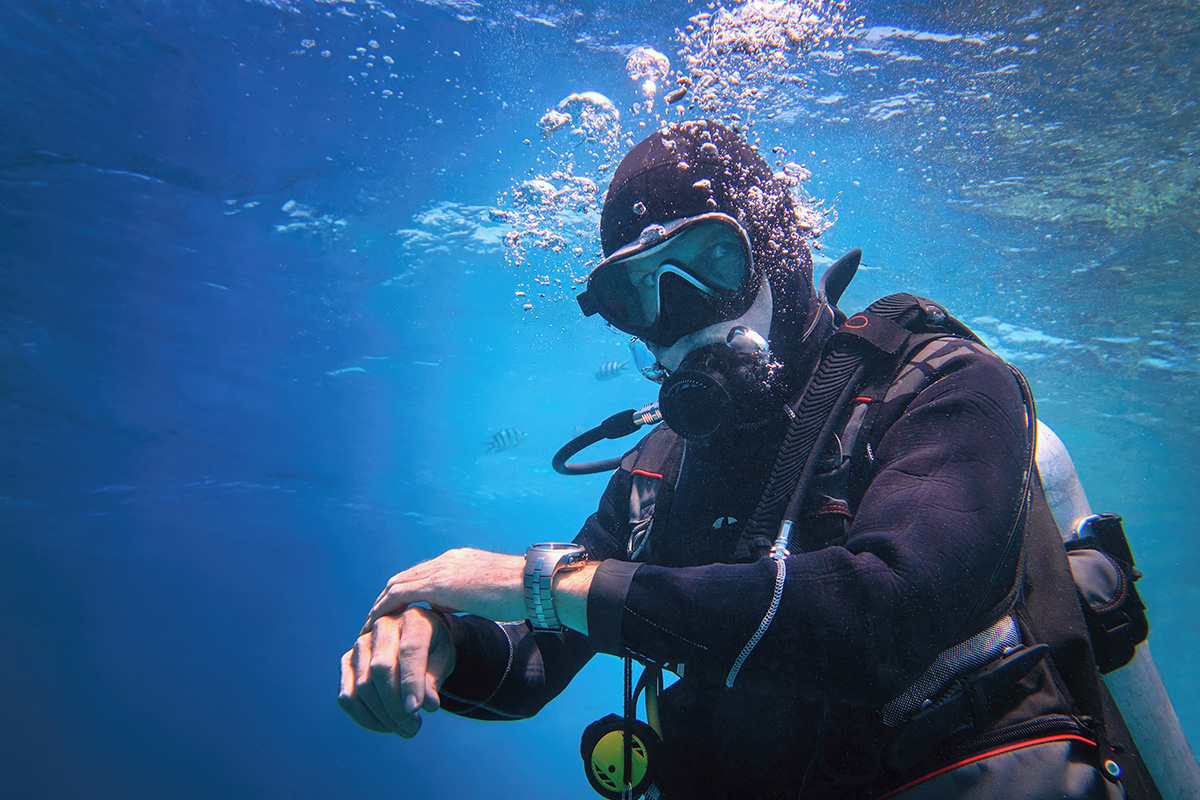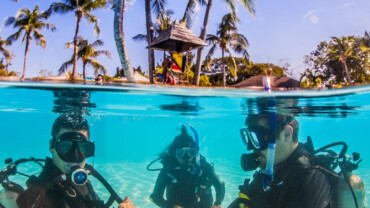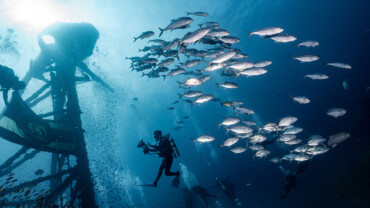Know Where You’re Going — and How to Get Back
If you’ve ever surfaced from a dive farther from the boat than expected, or wondered how your dive guide always seems to find their way back to the same exact spot—they probably had solid navigation skills. The PADI Underwater Navigator course gives you those same tools.
This isn’t about turning you into a human compass overnight. It’s about building confidence, sharpening your observation skills, and helping you feel more independent and in control of every dive. Whether you’re new to diving or already experienced, learning to navigate underwater adds a whole new layer of awareness and satisfaction to your dives.
What You’ll Learn
This course is all about situational awareness and underwater “sense of direction.” You’ll learn to:
- Use a compass underwater effectively (yes, they behave differently down there!)
- Estimate distance using kick cycles and timing
- Navigate with natural references, like reef contours, sand ripples, and sunlight angles
- Create and follow navigation patterns, like squares and triangles
- Relocate a specific spot, like your entry point or a hidden reef
- Mark and map a site for future dives
- Troubleshoot when things don’t go as planned (because sometimes they won’t)
Why It’s Important
Underwater navigation isn’t just a cool skill—it’s a practical one that improves safety and gives you freedom:
- Find your way back to the boat, shore, or entry point without surfacing to check
- Plan and execute dives independently with more confidence
- Avoid unintentional ascents or overextensions
- Protect the environment by minimizing unnecessary wandering
- Reduce stress during dives (for you and your buddy)
Course Structure
The PADI Underwater Navigator course is structured to help you gradually build and apply new skills:
- Knowledge Development: Covers compass use, navigation theory, and environmental cues
- Three Open Water Dives: Practical, hands-on sessions where you practice compass and natural navigation techniques
- Progressive Challenges: You’ll start simple and build to more complex patterns
Course Highlights
- Personalized coaching and feedback during each dive
- Real-world tasks like locating objects or returning to specific points
- Introduction to basic underwater mapping
- Fun challenges—like navigating a square blindfolded (not really, but it’ll feel like it at first!)
Who It’s For
This course is perfect for:
- Open Water divers who want to build real confidence underwater
- Advanced Open Water students—this course can count as your Navigation Adventure Dive
- Dive buddies and team leaders who want to take the lead on planning and orientation
- Aspiring Rescue Divers and Divemasters who need strong navigation skills as a foundation
- Any diver who’s felt a little turned around under water or wants to explore more independently
Requirements
Before enrolling, you’ll need:
- PADI Open Water Diver certification (or equivalent from another organization)
- Minimum age: 10 years old
- Standard scuba gear, plus:
- A compass (wrist or console-mounted is fine)
- A slate or underwater notepad
- A timing device (watch or dive computer)
If you don’t have these items, your instructor or dive shop will often provide or recommend options.
Course Duration
- 1–2 days, depending on location, schedule, and group size
- Includes three dives, often spread across one or two outings
- Can be bundled with other specialties or added to your Advanced Open Water course
Benefits
- Confidence and Control: Feel sure of where you are and where you’re headed
- Dive Independence: Less reliance on dive guides or groups
- Planning Skills: Learn to read and use dive site maps more effectively
- Improved Buddy Diving: Take the lead (or follow better) with a solid plan
- Professional Progression: Required for many pro-level courses like Divemaster
Additional Considerations
- If you plan to dive in low-visibility environments, navigation becomes essential—this course is a great prep
- If you’re interested in wreck, night, or search and recovery diving, strong nav skills will support your success in those areas
- You’ll start seeing underwater environments with a different lens—learning to “read” the terrain more like a local
A Word from an Instructor
Let me be honest: I used to hate using a compass underwater. It felt clunky, confusing, and I didn’t trust it. But once I understood how to really use it—and paired that with environmental clues—it clicked. Now, underwater navigation feels like a game, a puzzle I get to solve on every dive.
Watching divers go from “I hope we get back to the boat” to “Let’s take the lead and loop back to the anchor line” is one of the most satisfying parts of teaching this course. It’s a small skill with a big impact—and one that makes you a better, more aware diver across the board.





